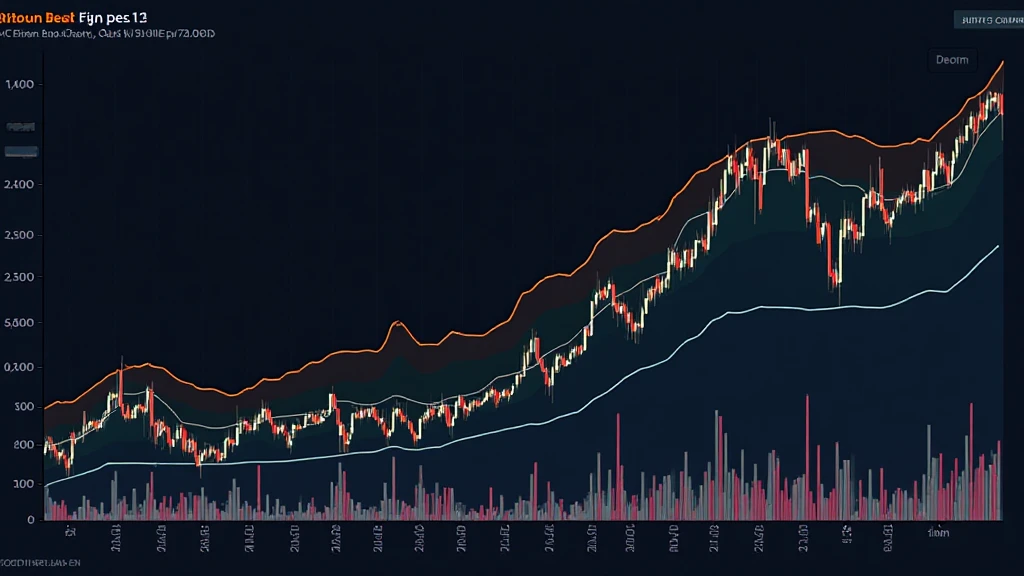Introduction: Understanding Bitcoin Market Cycles
As the world of cryptocurrencies continues to evolve, the need for accurate Bitcoin market cycle prediction has never been more critical. In 2024 alone, approximately $4.1 billion was lost to DeFi hacks, highlighting the volatility and unpredictability of the crypto market.
The Bitcoin market operates in cycles, influenced by various factors including market sentiment, economic trends, and technological advancements. Understanding these cycles can empower investors to make informed decisions and capitalize on market movements.
The Nature of Bitcoin Market Cycles
Bitcoin price cycles are characterized by periods of growth followed by corrections. Historically, these cycles can be observed over a four-year span, largely influenced by the halving events that reduce the supply of new coins entering the market.

- Bull Market: Characterized by increasing prices, heightened market interest, and overall optimism among investors.
- Bear Market: Marked by declining prices, nervous investor sentiment, and widespread pessimism.
- Accumulation Phase: A period where savvy investors buy assets while prices are low, anticipating future bull runs.
- Distribution Phase: When investors sell off holdings at peak prices, leading to a subsequent downtrend.
For a well-rounded Bitcoin market cycle prediction, it’s essential to examine key indicators such as trading volume, market sentiment, and external economic factors.
Key Indicators for Cycle Predictions
Several indicators can aid in predicting Bitcoin market cycles. Understanding these indicators can provide valuable insights into when to enter or exit the market:
- Technical Analysis: Utilizing tools like moving averages and Fibonacci retracement levels can help traders identify potential entry and exit points.
- On-Chain Metrics: Monitoring wallet activities, coin age, and transaction volumes offers insights into market behaviors.
- Market Sentiment Analysis: Keeping track of social media trends, news sentiment, and public interest can gauge market enthusiasm.
- Global Economic Indicators: Events like inflation rates, government regulations, and technological advancements can sway Bitcoin’s price.
Evaluating Past Market Cycles
To enhance our understanding of Bitcoin cycles, let’s look at previous market behaviors:
| Year | Market Sentiment | Price Movement |
|---|---|---|
| 2017 | Bull Market | $1,000 to $20,000 |
| 2018 | Bear Market | $20,000 to $3,100 |
| 2021 | Bull Market | $29,000 to $64,000 |
| 2022 | Bear Market | $64,000 to $19,000 |
Each cycle presents distinct opportunities and challenges for investors.
Predictions for Future Bitcoin Cycles
Given the cyclical nature of Bitcoin, predictions can be made based on historical data, emerging trends, and technological advancements. Here are some anticipated trends for the coming cycles:
- Integration of AI in Trading: Artificial Intelligence is set to revolutionize trading strategies, offering personalized and efficient crypto trading experiences.
- Increase in Institutional Adoption: With more institutional players entering the market, Bitcoin could see a stabilizing effect on its price, reducing volatility.
- Regulatory Changes: Governments are increasingly focusing on cryptocurrency regulations, which will significantly impact market dynamics.
- Environmental Concerns: Sustainable practices in Bitcoin mining might affect the overall supply and consequently, the prices.
Market Predictions for 2025
Predictions for 2025 suggest that Bitcoin may continue to experience strong growth, with conservative estimates placing its price between $100,000 and $250,000. External factors, such as the evolution of decentralized finance (DeFi) and the rise of digital currencies in emerging markets, including Việt Nam, will play crucial roles in shaping this trajectory. In Vietnam alone, user growth in crypto has been substantial, creating a unique market influence.
In fact, the Vietnamese cryptocurrency market has been growing at an impressive rate of more than 20% yearly, demonstrating burgeoning interest among Vietnamese investors.
Practical Tips for Investors
Now that we’ve examined historical data and future predictions, here are some practical tips for investors looking to navigate the Bitcoin market effectively:
- Stay Informed: Follow news updates, reports, and analyses to remain current on market changes.
- Utilize Portfolio Diversification: Avoid putting all your investments into Bitcoin; consider diversifying into altcoins with potential, such as 2025’s promising altcoins.
- Implement Risk Management: Set stop-loss limits to minimize potential losses and protect your investments.
- Consider Long-Term Holding: Patience can prove to be rewarding; long-term holders often see significant returns.
By applying these strategies, investors can position themselves to take advantage of the next cycle.
Conclusion
Understanding and predicting Bitcoin market cycles is essential for any serious investor in the cryptocurrency space. These cycles, driven by a mix of historical trends, market sentiment, and external influences, present both risks and opportunities.
As cryptocurrency technology continues to evolve, staying informed and adapting strategies accordingly will be vital for investment success. Keep an eye on market indicators, and don’t hesitate to adjust your approach based on emerging data.
In summary, accurate Bitcoin market cycle prediction is about recognizing patterns and understanding the factors that drive them. As we look towards the future, embracing a holistic approach will empower investors to thrive in this dynamic market.
For more updates on cryptocurrency and blockchain technology, visit cryptocoinnewstoday.





